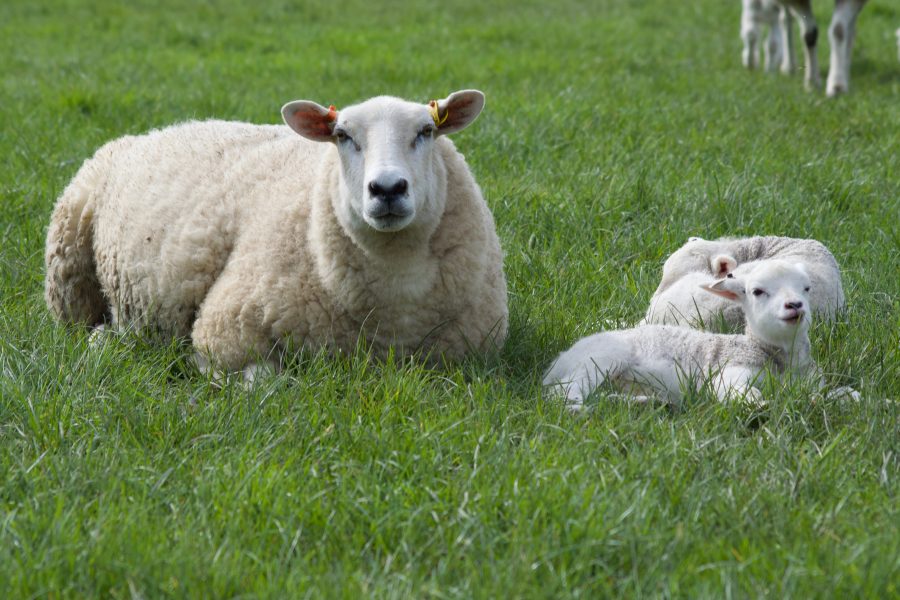Lambing is almost done. We have just a couple of Herdys to go, but they will do what they do, when they want to do it; the tup went in at the same time as the other tups but, true to form, nothing happened for a couple of weeks (it’s the ewes, the ram’s always keen), while the Lleyn and Suffolk rams just got on with it.
The Lleyn started lambing almost on cue; 145 days would have seen the first lambs hitting the ground on 9 March and in the event the first arrived on the 11th. This was a lovely pair of twins, looking good, the next a cracking single accompanied by a mummified foetus which, by its size, I would estimate as being about six to seven weeks in. This should have rung alarm bells, but sheep being sheep you do the usual and consider it to be just one of those things; it happens.
To be fair, all of the lambs born have been good and strong, with virtually no assisted lambings. The average weight at around 5kg is about right for the Lleyn and there have been some smart looking lambs amongst them, plus the mums have been full of milk; both good indicators that the feeding has been just about right. But numbers have been appalling; in terms of lambing percentage it has been my worst lambing in 35-plus years, and that in spite of lambing in some horrendous weather in the past. We only had one set of triplets, which is no bad thing, but far too many singles.
To further compound the problem, a good week into lambing it was becoming increasingly obvious that things were not as they should be. Lambing outside I do not crutch the ewes; a bit of wool around the rear end affords a degree of protection to the udder during inclement weather, so udder development is not always that easy to spot, but there were a few that I thought should have been showing more bag than was apparent. Having gently walked them all up into the yard one morning, I quietly drafted out those that I thought weren’t showing the udder I expected; there were a few with small, tight udders which I quite like – those ewes with nice tight udders do generally last longer, but there were several with absolutely no sign of any udder development.
I knew that they had all taken the tup very quickly (12 days) last autumn and, being unusually cautious, had left the ram in for almost two full cycles in case some of the earlier marked ewes hadn’t held in lamb; none were over-marked and even if some had come back to the ram unnoticed, they should all have been showing some udder. It is pointless regretting what one hasn’t done, but for a few moments I did lament not scanning this year. I realised, somewhat belatedly, that I had a number of empties, in fact significantly more in just this year than I’ve had in total over the past eight or more years. I didn’t go back through records prior to 2016; what is done is done.
Considering the season, all of the ewes were, at about BCS 3.5, in good condition going to the tup. Tupping had gone smoothly, as had post-tupping management, nothing different to normal. I really could not work out what had gone wrong, but I knew that something was amiss. A long chat to the vet and really no further forward, we considered and ruled out all of the normal suspects and concluded that it was either the impact of the hot and dry weather extending into the early autumn or, just possibly, Schmallenberg hitting the flock early in pregnancy.
The discovery that a significant number of other producers across the region were experiencing similar problems didn’t make things better, but knowing that I was not alone at least provided some reassurance, a good illustration of how important it is for flock owners to talk to each other at what can be quite a stressful time. Nothing could be done to alter the problem and it didn’t make it go away, but a shared problem always seems a bit less of an issue.
Subsequent conversations with breeders in other parts of the country have highlighted similar problems elsewhere, from the West Country to Wales, with some sadly being very much harder hit; one friend and fellow breeder in Wales has lost more than 25% of his lamb crop to Schmallenberg, something that really does put my problems into some sort of perspective. Locally I have come across several flocks within a half-mile radius of me and who tupped at around the same time, that have had very similar experiences, one almost identical. It does seem to be a rather patchy and localised issue, whatever the cause.
All I/we can hope for is that for those lambing just a bit later, i.e. into April, the problems had worked their way through the system before they put their tups in. The Herdys, for example, tupped just a bit later, and in a different location all seem to be fine; they have all bagged up and are producing some cracking lambs. At the rate they are going they may even outperform the Lleyn this year, something that, if it does prove to be the case, I’m sure I will be reminded of on a fairly regular basis for some time to come.
But that’s sheep. It’s what makes them interesting, but just occasionally it would be nice if they were just a little less ”interesting”; 2024 will be a year to remember and one that will of necessity simply need to be put down to experience.







